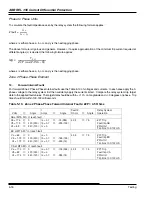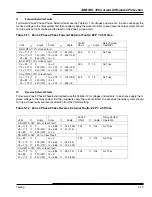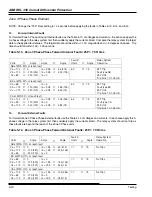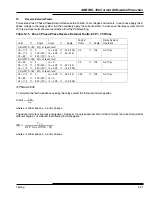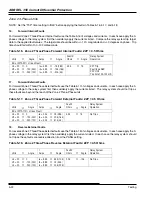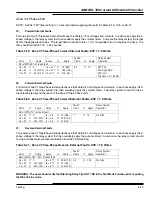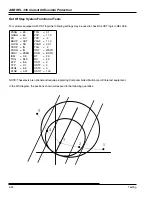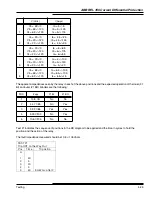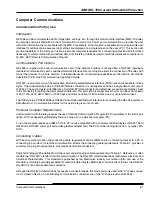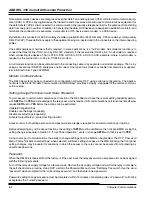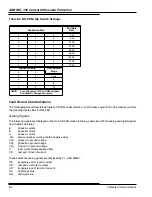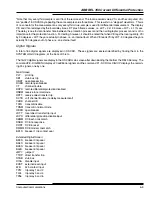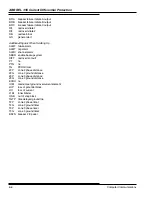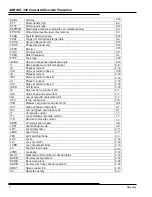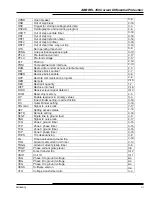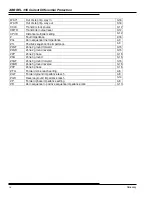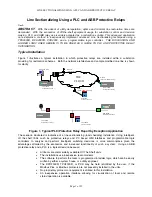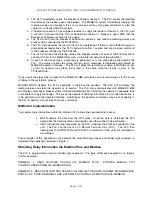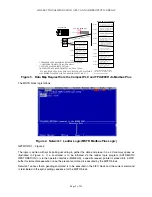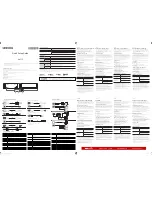
ABB REL 356 Current Differential Protection
6-2
Computer Communications
Data communication devices are categorized as either Data Terminal Equipment (DTE) or Data Communication Equip-
ment (DCE). A DTE is any digital device that transmits and/or receives data and uses communications equipment for
the data transfer. DCE’s are connected to a communication line (usually a telephone line) for the purpose of transferring
data from one point to another. In addition to transferring the data, DCE devices are designed to establish, maintain, and
terminate the connection. As examples, a computer is a DTE device and a modem is a DCE device.
By definition the connector of a DCE is always female (usually DB-9S or 25S). Similarly, DTEs are always male (usually
DB-9P or 25P). These definitions apply to the equipment being con-nected and to the connectors on the interconnecting
cables.
One additional piece of hardware that is required, in some applications, is a “null” modem. Null modem’s function is to
connect the transmit line (TXD), pin 2 by RS-232C standard, to the receive line (RXD), pin 3. A null modem is required
when connecting like devices. That is DTE to DTE or DCE to DCE. A DCE to DCE, example, where a null modem is
required, is the connection of a 25 pin, PONI to a modem.
A null modem function can be accomplished in the connecting cable or by separate null modem package. That is, by
using a conventional RS-232C cable plus a null modem. One type of null modem, available from electronics suppliers,
is B & B Electronics Type 232MFNM.
Modem Communications
The REL 356 system can be connected to its configuration software, RCP, using a dial up configuration. The Applica-
tion Note in Section 8 “Modem Communication to ABB Relays” provides a step-by-step guide for the remote communi-
cations setup.
Setting Change Permission and Relay Password
To gain access to certain communication port functions, the REL 356 must have the remote setting capability permis-
sion SETR set to YES and knowledge of the relay password is required. All communications port functions listed below
require SETR set to YES before the actions can be performed:
Update/Change Settings
Enable Local Settings (capability)
Disable Local Settings (capability)
Activate Output Relays (contact testing function)
Access control, both setting permission and password knowledge is required for all communication port options.
Before attempting any of the above functions, the setting of SETR must be verified via the front panel MMI. Using the
setting change procedure in Section 2, “Front Panel Operation”, verify or change SETR such that it is set to YES.
Using comm. port communications, the ability to change settings from the MMI can be disabled. The RCP, Password
Menu Choice “Disable Local Settings” when selected, will block setting changes via the MMI. Blocking the front panel
setting changes, may be useful for situations in which the access to the relay cannot be secured from tampering by
unauthorized persons.
Password:
When the REL 356 is received from the factory or if the user loses the relay password, a new password can be assigned
with the following procedure:
Turn off the relay dc supply voltage for a few seconds, Restore the dc supply voltage and wait for the relay to complete
the self check/start-up routine, Using RCP, perform the Password Menu choice “Set Relay Password”, Use the word
“password” when prompted for the “current relay password” and then enter a new password.
Password setting change procedure must be completed within 15 minutes of energizing relay or “password” will not be
accepted as the “current” password.
Summary of Contents for REL 356
Page 23: ...ABB REL 356 Current Differential Protection 1 10 Product Overview and Specifications ...
Page 83: ...ABB REL 356 Current Differential Protection 3 36 Settings and Application ...
Page 127: ...ABB REL 356 Current Differential Protection 5 28 Testing ...
Page 186: ...LINE SECTIONALIZING USING A PLC AND ABB PROTECTIVE RELAY Page 49 of 53 ...
Page 187: ...LINE SECTIONALIZING USING A PLC AND ABB PROTECTIVE RELAY Page 50 of 53 ...
Page 188: ...LINE SECTIONALIZING USING A PLC AND ABB PROTECTIVE RELAY Page 51 of 53 ...
Page 189: ...LINE SECTIONALIZING USING A PLC AND ABB PROTECTIVE RELAY Page 52 of 53 ...



